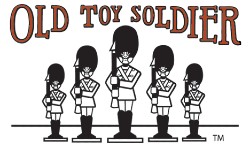Introduction
It has been my great privilege to have played in bands for over 55 years. I have traveled across Canada a few times, throughout the United States and most countries of Europe, as well as New Zealand and Australia. For a few years I was also a bandmaster. I was fortunate to be a member of the Canadian Staff Band of The Salvation Army. Many of its members were former brass bandsmen and members of various Guards bands in Great Britain. I had the great honour of being a member of the cornet section, vocal soloist, and band historian. What a thrill it was to play in some of the great concert halls of Europe and to march down the mall in London and play an hour’s concert in the forecourt of Buckingham Palace. The last band of which I was a member and president was Queen City Brass in Charlotte, NC. It was only natural therefore to combine my interests in banding and making model soldier bands. I now have over 9,800 figures in my collection. Included in that number are 125 bands, ranging from Roman times to the present. I love to attend shows and view all the mouth-watering figures on display and for sale. Of course, bands, mounted or on foot, will grab my attention. Quite often I will see a great set but the incorrect positioning of the instrumentation for me takes something away from an excellent display. Therefore, I have at the request of the editor set out in this article material that I hope will help those entering figures in competitions or on special display at a library or other event or for your own shelves to avoid a few pitfalls.
Full Bands of the British Brigade of Foot Guards
Firstly, let’s look at the British Brigade of Guards. The five regiments consist of Grenadier, Coldstream, Scots, Irish and Welsh Guards. Each Regiment has a full band.
Figure 1: Typical formation Full Bands of the British Brigade of Foot Guards

- Drum Major
- Trombone
- Bass Horn
- Euphonium
- Alto Horn
- Cornet
- Side Drum
- Bass Drum
9. Cymbals
10. Piccolo
11. Saxophone
12. French Horn
13. Bassoon
14. Clarinet
15. Bass Trombone
x. Director of Music
The full band usually numbers about 35 members. Although the uniform will vary between rehearsal and parade, the formation will be consistent. The uniform of the Drum Major of a Guard’s Band will change depending on the occasion in which the band is participating. His state dress will be a maroon cap (like a baseball cap) and gold and maroon uniform. You will find that most British Commonwealth bands will generally follow the format shown in Figure 2 when on parade. It should be noted that the director/bandmaster may choose to make a change here and there at their discretion.
Other Regiments and Instrumentation
What about other foot bands on parade? Within the Brigade of Guards there are also Drum and Fife bands. A drum major will march in front of these bands. Other instrumentation will include side drums, cymbal, bass drum and fifers. In inclement weather a side drummer in the second row will be replaced by a colour-case bearer (responsible for carrying a leather case to protect the Colour in inclement weather). The most common formation is shown in Figure 2. The Guards fife and drum bands all carry a bugle as represented by Britains in Set #130 the big display set of Scots Guards. No fifers were provided in this big display. Viewing various videos and my personal viewing while in London I have never
seen them play their bugles!
Figure 2: Typical formation – Guards Fifes and Drums

- Drum Major
- Side Drum
- Colour Case Bearer
4. Cymbal
5. Bass Drum
6. Fifers
Another common corps is a combination of drums and fifes or bugles. The number of musicians is about the same but instead of marching five across they are typically four across and six rows deep. The formation is similar for fifers and buglers, but it should be noted that all drummers and fifers also carry bugles. This is typical for British Regiments of the Line. A Light infantry regiment would typically have 16 buglers.
If you have seen any of the Military Tattoos or the Changing of the Guard at Buckingham Palace, Windsor Castle or St James Palace, you may have seen the green uniforms of Light Infantry marching at their 160 paces to the minute. Their formation is a combination of bugles and military brass and woodwinds. Each band consists of about 33 to 37 musicians. The formation is as shown in Figure 4. There are a number of British and Commonwealth regiments designated as light infantry. My old regiment was the Royal Canadian Lorne Scots Infantry. There is also the Princess Patricia’s Canadian Light Infantry.
Figure 3: Typical formation Drums and Bugles band

- Drum Major
- Side Drum
- Tenor Drum
4. Bass Drum
5. Fifers
6. Buglers
Figure 4: Typical formation Light Infantry band
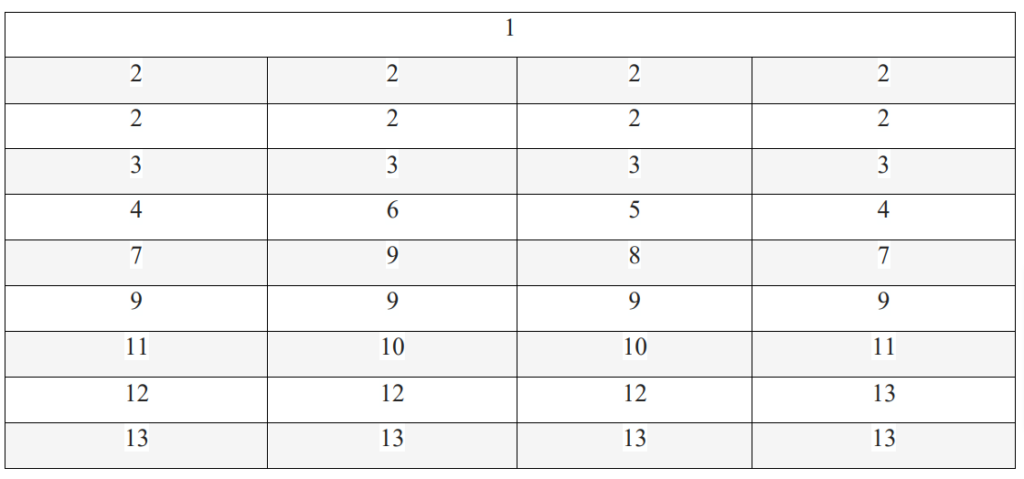
- Bugle Master
- Buglers
- Trombones
- Bass
- Tuba
- Euphonium
- Cymbals
8. Side Drum
9. Bass Drum
10. Cornet
11. French Horn
12. Saxophone
13. Clarinets
14. Piccolo
Pipes and Drums
Of course, where would we be without the swirl of pipes and drums? I was fortunate enough to be the drum major of the Royal Canadian Lorne Scots Light Infantry Cadet Band for five years. The uniform of pipes and drums will vary in head dress, colour of jacket and kilt depending on the clan adopted. On many occasions the drummers will wear a different colouring pattern on kilts or trews from the pipers, so be careful with your research. The Irish Guards wear an orange kilt and do not have a pipe major as in other pipe bands. The number of members in guards pipe bands is usually 16, but in Highland and Lowland units the number is usually 20 members.
Figure 5: Typical formation Pipes and Drum Bands

- Drum Major
- Piper
- Piper Major
4. Tenor Drum
5. Bass Drum
6. Side Drum
Cavalry Regimental Bands
I am always impressed and excited when I see a mounted band and I am always looking out for a display of them in miniature. The British Household Cavallry have a set formation for the band of the Life Guards and Blues and Royals. These old and historic regiments are deployed in many events, in and around London. If they change guard at Windsor Castle, they will march on foot six abreast, with the Life Guards forming three ranks on the right and the Blues and Royals three ranks on the left. Their foot-parade formation would be like the foot guards.
For mounted duty the band formation would be as shown in Figure 6. Firstly, a single regimental band and secondly a combined household calvary band.
Figure 6: Typical formation Household Cavalry Mounted Bands
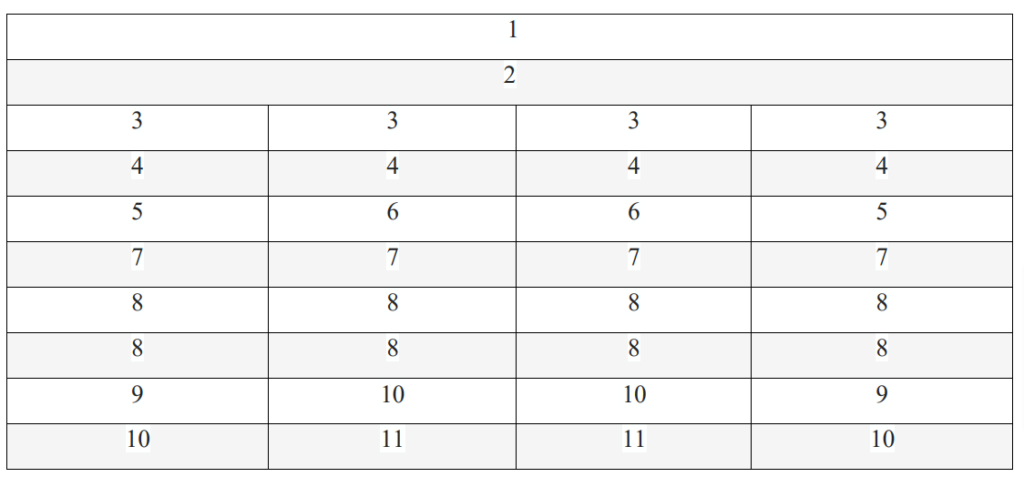
- Director of Music
- Kettle Drum
- Trumpets
- Basses
- Euphonium
- Tenor Horns
7. Trombones
8. Cornets
9. Saxophone
10. Clarinets
11. Piccolo
Massed Household Cavalry Band
On many occasions, for example Trooping the Colour, both bands will be combined. The Blues and Royals are deployed to the left, with their drum horse in front. The Life Guards are to the right, headed by their drum horse. Normally they wear their blue or red uniforms, but for certain duties they wear state dress. The Director of Music at the very front of the combined band will be from the squadron whose standard is being carried in the procession. There are no cymbals in modern mounted bands. It is quite possible that in the early days Britains was correct in having a cymbal in a mounted band, since all military bands had a cymbal player. However, in all my research I have not found any examples of cymbals used in modern mounted bands.
Figure 7: Massed Household Cavalry Band Formation

- Director of Music
- Drum Horse
- Bass Tromobone
- Trombone
- Bass Horn
- Euphonium
7. Tenor Horn
8. French Horn
9. Cornet
10. Saxophone
11. Piccolo
12. Clarinet
13. Piccolo
The drum horse is either piebald or skewbald because it must be stronger to carry the drums. They are highly trained not to panic when the drums are being played. They will usually be white and brown in colour. The state trumpeters ride white horses and all others on black horses. Things were different when Britains first produced their Set #101, when Greys were used in more positions. 1st version sets are all mounted on Greys and even the post WWII version has half the band mounted on Greys, with one musician playing cymbals.
There are of course many other cavalry bands, both regular army and yeomanry units. Typical formations are shown in Figure 8.
Most of the above-noted band formations are standard for military bands in Great Britain. They are also closely followed by military bands in the British Commonwealth. Typical formations for other countries will be the subject of a future article.
Figure 8: Other Cavalry Bands
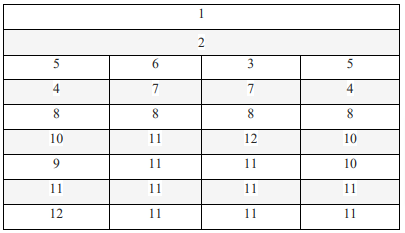
- Director of Music
- Drum Horse
- Bass Trombone
- Trombone
- Bass Horn
- Euphonium
7. French Horn
8. Cornets
9. Saxophone
10.Baritone
11. Clarinet
12. Piccolo
About the author: Norman was originally from Toronto, Canada and now lives in Charlotte, NC with wife, Patricia, and daughter, Jenelle. He has served as a choral leader and bandmaster and was a member of the Canadian Staff Band of The Salvation Army for 20 years. He is presently a member of the Ontario Model Soldiers Society and the South Carolina Military Miniatures Society.
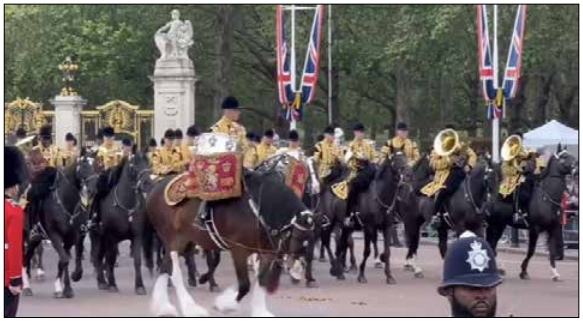
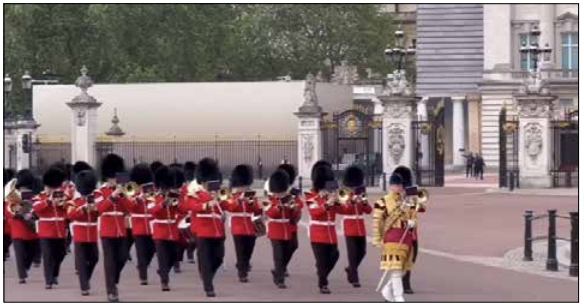
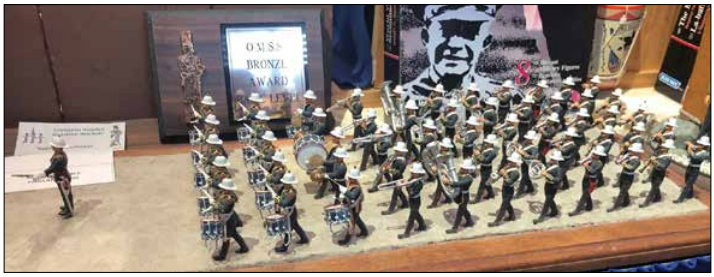
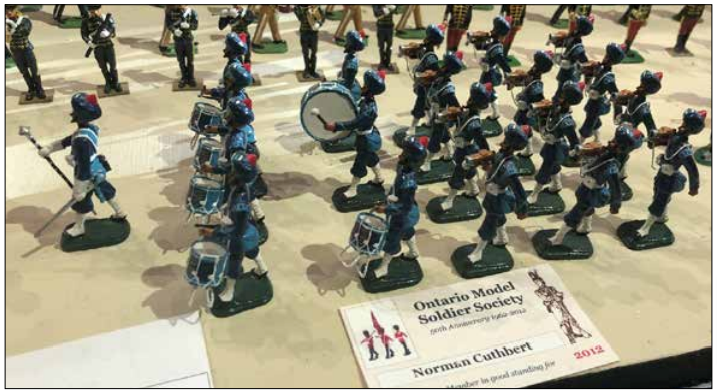
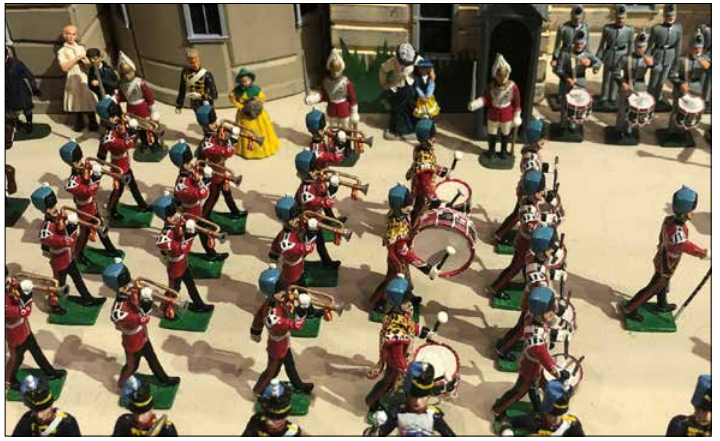
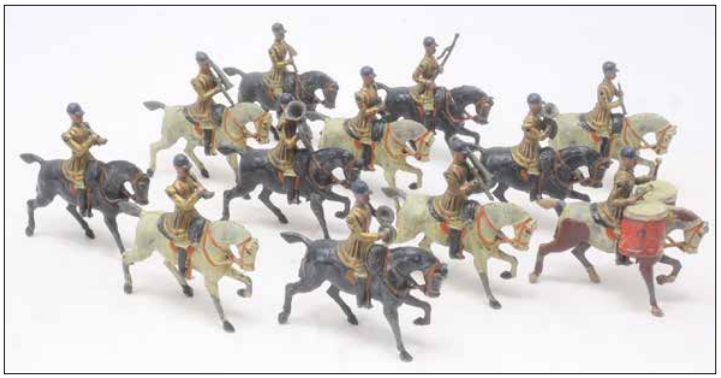
and euphonium in the next row (right to left); Three cornets in the next row; and two clarinets and bassoon in the last row
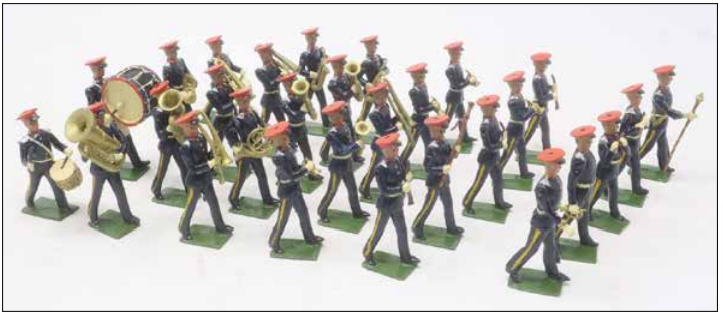
bassoons and clarinets should be at the back with trombones taking the lead
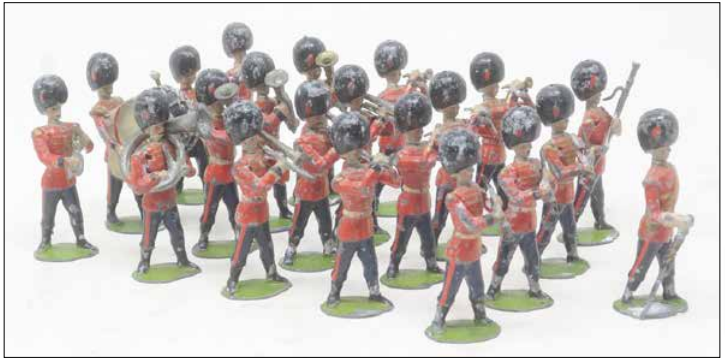
not at the rear – bassoons and clarinets should be at the back while trombones should be in front rank
